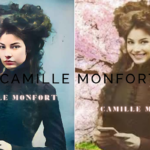Christine Gacy, the daughter of one of America’s most infamous serial killers—John Wayne Gacy—has lived her life in deliberate privacy and mystery. While her father became a symbol of horror in true crime history, Christine took another path, one away from headlines and public judgment. As the adopted daughter of a convicted murderer, her story isn’t one of guilt or complicity, but of resilience and distance. In this article, we explore the life and background of Christine Gacy, the impact of her father’s crimes, and the complex legacy she carries without ever asking for it.
Who Is Christine Gacy?
Early Life and Background
Christine Gacy was born in March 1967 to John Wayne Gacy and Marlynn Myers. She had an older brother, Michael, and both children lived briefly with their parents in a seemingly ordinary household in Waterloo, Iowa. During the late 1960s, John Gacy managed several KFC franchises and actively participated in community organizations, building an image of a respectable family man. However, this illusion was shattered when Gacy was convicted in 1968 for sexually assaulting two teenage boys.
Marlynn immediately filed for divorce the day of Gacy’s conviction. She obtained full custody of Christine and Michael by 1969 and cut all contact between the children and their father. From that point, Christine’s life diverged from the public eye. Her name was rarely mentioned in any major press coverage. It’s believed that she grew up completely removed from Gacy’s presence, though certainly never from his haunting shadow. Her childhood became a private effort to reclaim normalcy in the aftermath of a household destroyed by criminality.
Public Awareness and Identity Controversy
As John Wayne Gacy’s crimes emerged in the late 1970s, the media frenzy was immense. Despite this, Christine’s name barely surfaced in the records. Over time, scattered reports confirmed that Gacy had a daughter and a son, but neither made public appearances. This unusual absence led to internet speculation—some even questioned Christine’s very existence. But public records confirm she was indeed born, and reportedly changed her name to live in anonymity.
Christine has seemingly taken every step to erase her original identity, likely for protection and peace of mind. She never granted interviews, made statements, or acknowledged her past in public forums. This silence only fueled curiosity, but also highlighted a crucial fact: not all stories are for public consumption. Christine’s commitment to privacy has kept her outside of the Gacy narrative, preserving her life from becoming tabloid fodder.
Separation from Her Father’s Legacy
Distancing herself from her father’s heinous legacy was perhaps the most significant choice Christine made. While other family members of infamous criminals sometimes come forward to share their side, Christine has chosen total detachment. Her aunt, Karen Gacy, reportedly attempted contact with Christine and Michael during John Gacy’s trial, but received no response. Her gifts were returned, her letters unanswered.
This total separation is telling. It speaks to a need not just for physical, but emotional and psychological distance. Christine did not capitalize on her family name nor participate in any documentaries. Her silence represents a conscious, resilient rejection of a horrific past. Her choice to disappear from the public stage has been her way of reclaiming ownership of her life.
The Shadow of John Wayne Gacy
The Crimes of John Wayne Gacy
John Wayne Gacy, infamously known as the “Killer Clown,” was convicted of the murder of 33 young men and boys between 1972 and 1978. A respected figure in his community, he lured his victims under various false pretenses—offering work, drugs, or companionship. Beneath his suburban Chicago home, 26 bodies were found buried in the crawl space, while others were dumped in local rivers.
Gacy’s case was a national scandal. It exposed the failures of local law enforcement and horrified a nation already wary of serial killers in the 1970s. His alter ego “Pogo the Clown”—a character he used at children’s parties—only added a grotesque twist to the already chilling reality. Media quickly descended, and his name was cemented in true crime history.
Impact on Christine’s Life
For Christine, the daughter of a man who embodied evil in America, life could never be the same. Despite having no involvement in his crimes, she carried the stigma. The very name “Gacy” was a burden. Whether at school, among neighbors, or later in adult life, association with a man like John Wayne Gacy would bring scrutiny.
This likely explains her name change and complete retreat from the public. Protecting herself from trauma, judgment, or exploitation may have been a lifelong task. Society often forgets that the families of criminals are also victims in their own right. Christine’s story illustrates the collateral emotional damage inflicted on children by the crimes of their parents.
Media and Public Fascination
Christine Gacy in True Crime Media
In the years since Gacy’s execution in 1994, the true crime genre has only grown. Documentaries like Netflix’s “Conversations with a Killer: The John Wayne Gacy Tapes” reignited public interest. Yet, Christine remained absent from every episode, every frame, every statement. She has never spoken on record, nor has she contributed to any investigative or entertainment coverage.
Her silence speaks louder than any interview. It reveals a quiet insistence on being left alone—a message of self-respect and boundary-setting. Christine Gacy’s deliberate absence from this cultural obsession is powerful in itself. It’s not just that she refuses to relive the horrors, but that she reclaims her humanity by denying the spectacle.Ethical Concerns in Media Representation
Christine’s erasure from the media narrative highlights a broader ethical question: Should the families of criminals be made to suffer public scrutiny for crimes they didn’t commit? The answer must be a firm no. While public interest is understandable, it must be weighed against the right to privacy and personal dignity.
Many children and relatives of serial killers face emotional trauma and lifelong mental health challenges due to guilt by association. Christine’s ability to stay hidden is both rare and admirable. Her story teaches us that healing often requires retreat, and that respecting someone’s choice to disappear is a moral imperative.
Rebuilding a Life: The Human Side of Christine Gacy
Pursuit of Normalcy
Christine Gacy likely sought the very thing her childhood lacked—stability. Whether she pursued a career, built a family, or lived quietly alone, remains unknown. But the lack of any criminal, legal, or controversial documentation about her suggests success. In an age where even minor public figures are easy to track, Christine Gacy has managed near-total invisibility.
That in itself is remarkable. It suggests a life rebuilt with careful planning, perhaps even the aid of mental health professionals or legal advisors. Her path reminds us that survival, when paired with discretion, can result in true freedom—even from a name so notoriously feared.
Living in the Shadow: A Broader Perspective
Christine is not alone in her experience. From the children of Ted Bundy to relatives of Charles Manson’s followers, many people are forced to navigate life with a legacy they never asked for. Support networks, counseling services, and community efforts often overlook these people.
Their pain is complex—part grief, part shame, and part identity loss. Christine’s escape from this narrative is a rare success story. She stands as a quiet role model for others, proving that the sins of the father do not have to define the child.
Conclusion
Christine Gacy’s story is not one of notoriety, but of resilience and boundary. Born into a legacy soaked in horror, she chose a different path—one of erasure, protection, and peace. While her father remains infamous in history books, Christine remains an enigma. And perhaps that’s how it should be.
We often obsess over criminals and forget the silent survivors left in their wake. Christine Gacy reminds us that not all stories deserve to be public—and some silences are worth respecting.
Frequently Asked Questions (FAQs)
Is Christine Gacy still alive?
As of current public records, Christine Gacy is believed to be alive, though her exact whereabouts are unknown.
Did Christine Gacy ever speak about her father?
No public statements, interviews, or records exist of Christine discussing John Wayne Gacy.
Why did Christine Gacy change her name?
Likely to escape the stigma of her father’s crimes and lead a private life.
What happened to Christine’s brother, Michael?
Like Christine, Michael Gacy has remained out of the public eye and is believed to have changed his identity.
How do children of criminals deal with the trauma?
Many seek counseling, change their identities, and attempt to rebuild lives independently from their infamous relatives
You May Also Read: https://topbuzusa.com/camille-monfort/





